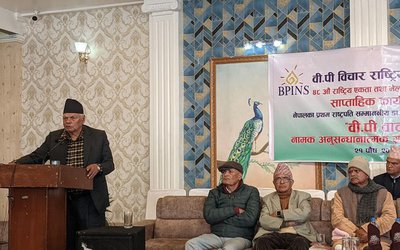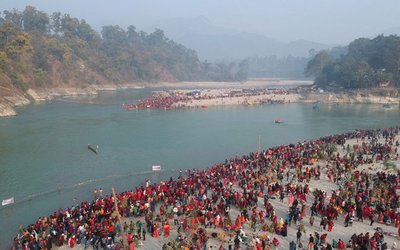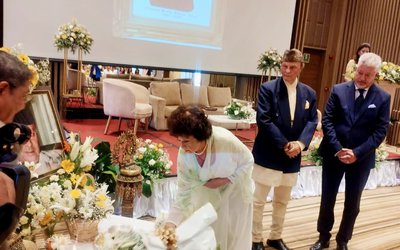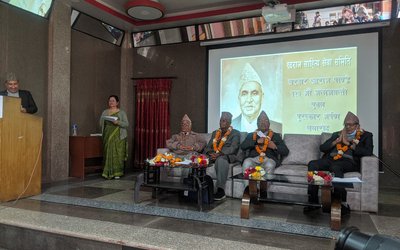More on Review





Although Nepal’s democratic movement is just over six decades old, it has seen several ups and downs in its history, including several conflicts. Various authors have tried to look at the state of conflict and democratic movement in their own theoretical persuasions. Few properly analyze Nepal’s overall scenario in that particular respect.
At a time when books on Nepal’s state of conflict and democratic movement are being written by Nepalese as well as foreign writers, readers continue to find confusing facts and contradictory statements in their interpretation of the political events. Two young Nepalese scholars Pyakurel and Adhikari have also chosen to highlight these events after events.
Divided in twelve different chapters, the book is a narrative of political events. The Pyakurel and Adhikari duo, who completed their Ph.D degrees from Jawaharlal Nehru University, have taken up to tell the tale of Nepali political transition through their own perspectives.
The authors argue that the political transition in Nepal has reached a critical phase. The new constitution is in the making, and with its promulgation, the country will enter into a new phase of democracy, along with a number of structural changes.
“During the last two decades, many a significant issue has emerged on the scene of Nepali society and polity. The process of political transition has unfolded many dimensions of considerable importance. The question of stabilisation of democracy, federalism, ethnicity, regionalism, and gender are becoming the core issues. The issues like causes and consequences of conflict, peace process, and negotiations are gaining rapid currency demanding immediate attention,” write Uddhab Prasad Pyakurel and Indra Adhikari in their preface. They further writes, “The internal and external political players have started acquiring a relevant role in this context. Likewise, the civil society finds itself assuming new shape and role accordingly. On the whole, the State of conflict and Democratic Movement in Nepal is beset with a host of burning issues.”
The author duo rationalize the importance of the book in the introductory chapter. They give brief views on various articles included in the book. This has helped the readers know the precise themes of the articles included in the book. The authors were influenced by Nepal’s renowned senior political scientist and scholar Professor Lok Raj Baral’s argument that Nepal is in a ‘permanent political transition’.
In his article, Political Transition in Nepal: An Overview, Uddhab Prasad Pyakurel discusses at length Nepal’s more than six decades of political developments. He tries to point out the flaws in the overall political system and its nature and socio-economic dynamics. As Nepal is in the process of constitution writing, the country may see many structural changes in the coming days. In this context, Pyakurel’s article will help us understand the change Nepal is heading for.
Indra Adhikari’s Conflict Transformation: A Nepali Perspective is an interesting article. It helps us understand the various phases of conflict in Nepal and its transformation. Author Adhikari opens with a theoretical background of conflict and conflict transformation and, based on the background provided, evaluates Nepal’s experience with Maoist conflict and the conflict transformation that started after the 12-point agreement was reached. Adhikari discusses the contradictory characters of Nepalese society.
Among other things, the book also includes a very interesting article, Women in Conflict: The gender perspective in Maoist Insurgency. Author Adhikari analyses the Maoist insurgency through the gender perspective. Although there are several books and articles that have already been published, this is the first article which extensively discusses the role of women in the Maoist conflict. The author tries to analyse what women got from the conflict for their greater sacrifice for the liberation of women. Compared to the contribution made by women, they didn’t gain much within the party or hierarchy.
Udhab Prasad Pyakurel and Indra Adhikari have chosen different perspectives from other authors who have written about the theme earlier. Along with looking on the political structure, they explain social, economic, ethnic and gender perspectives in the political transition of Nepal. Although one can find many points of disagreement with the authors, this book has something different to offer the readers.





